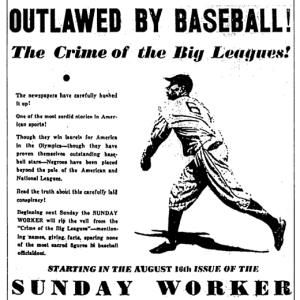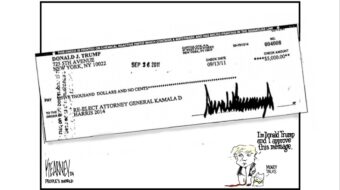
Baseball is back (let’s go Mets!) and the 2017 season is going on its third week with much nail-biting action, heartache, and joy.
And while fans nationwide were busy dusting off their ball caps, planning social events around team schedules, and hoping for a good October post-season, a press release from MLB.com stood out: Opening Day Rosters Feature Record 259 Players Born Outside of the U.S.
The foreign-born players represent 29.8 percent of all active players, an all-time high rate of non-U.S. players in major league ball.
According to the data released to the public by Major League Baseball, the leading country of origin was the Dominican Republic (93), followed by Venezuela (76), Cuba (23), Puerto Rico (16), Mexico (9), Japan (8), Canada (6), South Korea (5), Curaçao (4), Nicaragua (4), Panama (4), Australia (2), Brazil (2), Colombia (2), Aruba (1), Germany (1), Netherlands (1), Taiwan (1), and the U.S. Virgin Islands (1).
In short, America’s national pastime is made up of immigrants, many of them from Spanish-speaking countries.
Yet we have a president who is actively trying to build the “greatest” wall to curb illegal immigration; saying this is a “country where we speak English, not Spanish,” that will keep out all the “bad hombres.”
The Trump administration’s claim that undocumented (and documented) immigrant workers are stealing American jobs is a lie – one that strikes fear in the hearts and minds of working people, ultimately keeping us divided.
The New York Times last year highlighted data from a report published by the National Academies of Sciences, Engineering, and Medicine which showed that immigrants, in fact, do not steal jobs.
“We found little to no negative effects on overall wages and employment of native-born workers in the longer term,” said Francine D. Blau, an economics professor at Cornell University who led the group that produced the 550-page report.
But when we look at Major League Baseball, where there is a fixed number of jobs – unlike our economy – you will never hear a native-born player complain about immigrants “taking their jobs.” And the increase of non-native players hasn’t decreased the salaries of native-born players either (thanks to their union: MLBPA).
So, in keeping with this publication’s history of calling out injustice, this reporter would like to do just that.
Can you hear, President Trump?
America has been and will always be great. Thanks to the millions of immigrants that call this place home.
Can you read, President Trump?
Because it’s immigrants who are winning World Series, bringing new innovations into the economy, and enriching our culture. You should also take a look at the multiple court decisions striking out your ill-advised executive order on travel ban.
Can you talk, President Trump?
Because millions of Americans have questions they demand answers to, and 140-character rants on Twitter at 3am won’t cut it.
On May 26, 1942, a column similar to this one was displayed on the front page of the Daily Worker (a predecessor of People’s World), as the small communist newspaper continued its vigorous effort to break the color-line in major league baseball.

The Daily Worker and its Sports Editor Lester Rodney were among the few voices, at the time, tackling the issue of segregation in baseball – what the newspaper called “Jim Crow Baseball.”
Major newspapers overlooked the issue and legitimized the unwritten rule of racial separation. Team managers, club owners, and league presidents dodged hardball questions and gave scripted answer.
“Beyond the fundamental requirement that a major-league player must have unique ability and good character and habits, I do not recall one instance where baseball has allowed race, creed, or color to enter into its selection of players,” said Ford Frick, National League president.
The Daily Worker’s coverage and campaign to desegregate baseball lasted from 1936 until April 10, 1947. That was the day Jackie Robinson, #42, was signed by the Brooklyn Dodgers.
But it did more than that just break the color line, it also opened the door for immigrant players.
In 1940, fewer than 5 percent of all major league baseball players were foreign-born. Today, they make up almost a fourth.
So what’s the takeaway?
“The color-line in baseball wouldn’t have been broken when it was without the petition campaign [which included mass picketing, direct action, and constant pressure from independent press],” Lester Rodney said in an interview decades later.
For this reporter, it means that I will continue to throw on my Mets ball cap and RESIST. Forty-five will not destroy the game-changing legacy of #42.
Baseball, as a national sport, is culturally diverse, beautiful, and enriched by immigrants – just like the U.S. Let’s keep it that way.
We beat the travel ban, and we sure as hell can beat his next wild pitch.












Comments